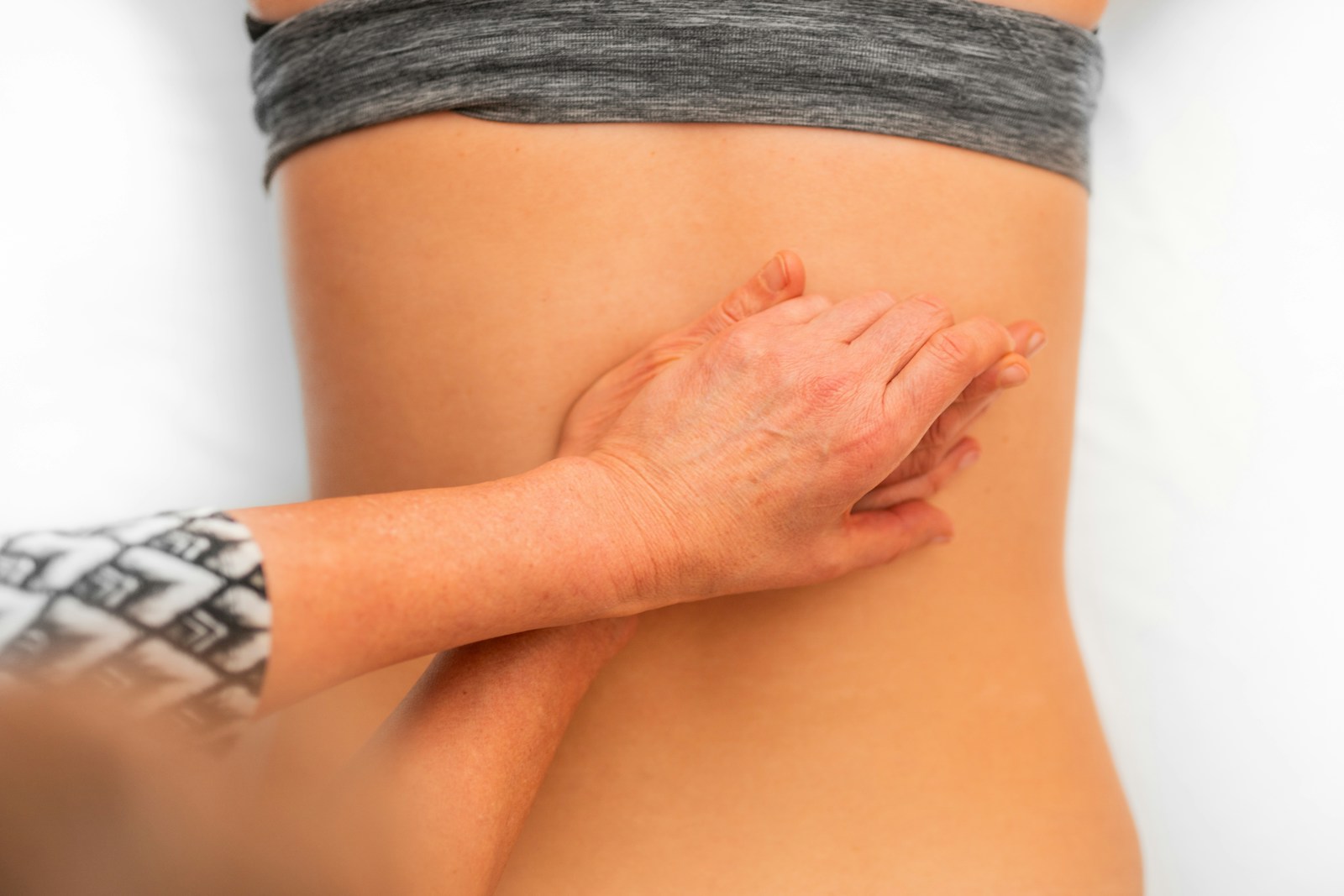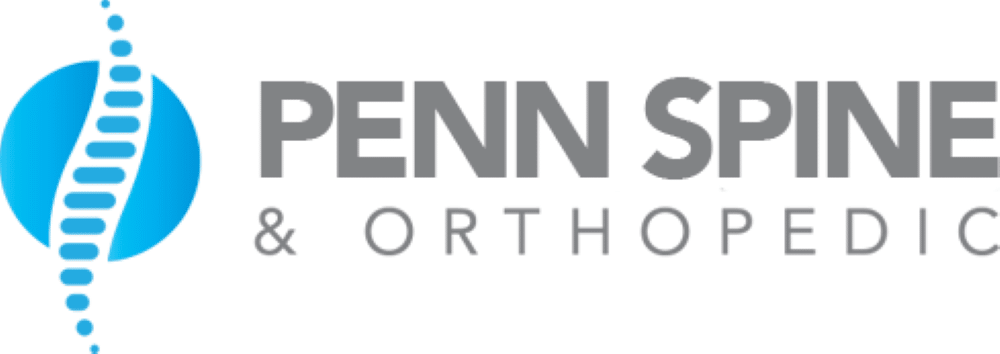As we examine the chart on female back pain, we uncover a plethora of factors interwoven with women’s unique biological and lifestyle influences. The chart elucidates the triggers, ranging from hormonal shifts due to menstruation and menopause to pregnancy-related issues. It further explores the often overlooked aspects such as posture and stress management that can markedly affect back health. It also presents a detailed view of diagnostic tools and various treatment approaches, both surgical and non-surgical. This insightful compilation prompts inquisitive minds to probe further for a more profound understanding of women’s back health.
Understanding Female Back Pain
Often, women experience back pain due to a variety of intricate physiological and lifestyle factors, necessitating a thorough understanding of its multifaceted nature for effective diagnosis and treatment. One such factor is the impact of menstrual cramps. Dysmenorrhea, the medical term for menstrual cramps, causes significant discomfort in the lower abdomen and back. This pain is induced by the release of prostaglandins, hormone-like substances that trigger the uterine muscles to contract. High levels of prostaglandins can lead to severe contractions, often resulting in intense back pain.
Another crucial contributor to back pain in women is the impact of aging. As women age, the probability of developing osteoporosis increases, a condition characterized by reduced bone density and structural deterioration of bone tissue. This can lead to an increased risk of fractures, particularly in the spine, causing chronic back pain. Moreover, age-related degenerative changes in the spine, such as spinal stenosis and disc degeneration, can exacerbate back discomfort.
Understanding these factors allows for a more accurate diagnosis and the development of effective treatment strategies, thereby improving the quality of life for women suffering from back pain.
Triggers of Back Pain in Women
Identifying the triggers of back pain in women requires a thorough examination of various physiological, psychological, and environmental factors that play a significant role in their manifestation.
Physiologically, hormonal changes during the menopausal shift have been linked to back pain. Research suggests menopause effects, including decreased estrogen levels, may contribute to disc degeneration and osteoporosis, increasing the risk of back discomfort.
Psychologically, stress, anxiety, and depression can heighten the perception of pain, potentially exacerbating back issues. These aspects warrant attention when considering holistic pain management strategies.
Significant weight implications are another key trigger. Excess weight, especially around the midsection, places additional strain on the back muscles and spinal structures. This can lead to poor posture and ultimately chronic back pain. A systemic review in the Journal of Biomechanics indicates a strong correlation between obesity and lower back pain.
Environmental factors such as sedentary lifestyle and poor ergonomics in the workplace can also contribute to back pain. The lack of physical activity weakens back muscles, while improper body mechanics during activities like lifting or sitting at a desk can strain the back.
Understanding these triggers helps in the development of effective preventive and treatment strategies for back pain in women.
Pregnancy and Back Pain
During pregnancy, back pain is a common ailment, with multifactorial causes including weight gain, postural changes, and hormonal fluctuations. Research indicates that approximately 50-70% of pregnant women experience back pain, signifying a need for effective management strategies. The subsequent discussion will focus on elucidating the mechanisms behind pregnancy-related backache and exploring evidence-based interventions to alleviate this discomfort.
Causes of Pregnancy Pain
Pregnancy-induced back pain, a common ailment affecting approximately 50-70% of expectant mothers, can be attributed to a myriad of physiological and hormonal changes. The release of relaxin, a hormone that loosens ligaments in preparation for childbirth, often results in instability and discomfort in the spinal region. Additionally, weight gain, shifts in the center of gravity, and postural adjustments can exacerbate the strain on the lower back. While pain management techniques and exercise benefits are commonly discussed solutions, it is essential to understand that these symptoms are a natural part of the pregnancy process. Furthermore, stress can worsen the pain, suggesting the need for holistic approaches in prenatal care. Future subtopics will explore methods of relieving pregnancy backache.
Relieving Pregnancy Backache
Given the prevalence and discomfort of back pain experienced by expectant mothers, the discussion naturally shifts towards exploring effective methods for alleviating such discomfort. Research indicates that implementing exercise routines designed for pregnant women can yield significant benefits. Regular exercise can strengthen the back muscles, thereby reducing the likelihood of strain and pain. Specifically, swimming and prenatal yoga are often recommended due to their low-impact nature.
Simultaneously, massage therapy has been recognized for its effectiveness in managing pregnancy-related back pain. Trained therapists target pain points in the lower back, helping to relieve tension and promote relaxation. It is vital, however, that any exercise or massage therapy regimen is undertaken under professional supervision to ensure safety for both mother and child.
Hormonal Influences on Pain
Influenced by hormonal fluctuations, the intensity and perception of back pain in women can vary greatly, a phenomenon that has been substantiated by a wealth of clinical research. An example of this is the notable impact of menstrual cramps on back pain. During the menstrual cycle, the production of prostaglandins – hormone-like substances – increases, causing uterine contractions and subsequently, lower back pain. Some females experience dysmenorrhea, a condition characterized by severe menstrual cramps which exacerbate this pain.
Hormonal contraceptives, on the other hand, can have an effect on back pain due to their influence on estrogen and progesterone levels. They often relieve menstrual cramps, thereby reducing the associated back pain. However, some studies suggest that certain types of hormonal contraceptives can lead to a decrease in bone mineral density, potentially increasing the risk of osteoporosis and associated back pain in the long term.

The Role of Posture
Undeniably, posture plays a critical role in the manifestation and management of back pain in females, as supported by extensive clinical studies on spinal biomechanics and ergonomics. Improper posture, often resulting from sedentary lifestyles or prolonged periods of sitting, can lead to increased stress on the spinal discs, resulting in chronic back pain.
Posture correction techniques offer a practical solution to mitigate the adverse effects of incorrect posture. These techniques aim to retrain the musculoskeletal system to adopt a posture that evenly distributes body weight, reducing strain on the back muscles and spinal discs. Implementing these techniques requires conscious effort and consistency but can yield significant improvements in pain management, as demonstrated by numerous related studies.
The use of ergonomic furniture is another effective approach in managing posture-related back pain. Ergonomic furniture is designed to support the natural curvature of the spine and promote correct sitting positions. This, in turn, helps eliminate unnecessary strain on the back, reducing the risk of developing chronic pain. Clinical findings provide robust evidence for the benefits of ergonomic furniture in improving back pain symptoms and enhancing overall posture.
Stress-Induced Back Pain
Compounding the physical factors that contribute to back pain, stress has emerged as a significant psychosomatic trigger, with research indicating a strong correlation between chronic stress and the exacerbation of back pain in females. The intricate relationship between emotional wellness and pain perception forms the basis of this correlation.
- Chronic stress can lead to muscle tension, particularly in the back and neck, as these are areas where the body typically holds stress. This tension can lead to discomfort and pain over time.
- Stress impacts the body’s pain perception. A heightened sense of anxiety or worry can amplify the body’s response to pain signals, making the discomfort feel more severe.
- Stress also disrupts the body’s natural healing processes. Chronic stress can impede recovery from injuries or strain, leading to prolonged periods of pain.
Common Back Pain Conditions
Among the plethora of health conditions that can lead to back pain in women, several stand out due to their prevalence, severity, and impact on quality of life.
Lumbar strain, disc injuries, and spinal osteoarthritis are common conditions causing back pain. Lumbar strain, often related to physical exertion, involves the stretching injury to the ligaments, tendons, and/or muscles of the lower back. Disc injuries, meanwhile, can occur gradually with repetitive strain on the spine or suddenly during an accident. Spinal osteoarthritis, a degenerative process affecting the spine, can also lead to significant discomfort.
Research indicates pain perception differences between genders, with women reporting higher pain intensity for most pain types. This suggests a potential need for gender specific therapies in managing back pain conditions in women. For instance, cognitive behavioral therapy has shown efficacy in managing chronic back pain, and its focus on modifying thought and behavior patterns could uniquely benefit women given their typically higher levels of reported stress and anxiety, which can exacerbate back pain.
Understanding these conditions and their unique presentation in women is essential for effective therapeutic interventions, and paves the way for a more personalized approach in treating back pain.
Diagnostic Tools for Back Pain
The diagnostic process for back pain integrates various tools, each playing an essential role in establishing an accurate prognosis. Imaging techniques provide an in-depth internal perspective, aiding in the identification of spinal abnormalities or injuries. Concurrently, physical examination and a thorough medical history review form the foundation of patient assessment, contributing greatly to an informed diagnostic conclusion.
Understanding Imaging Techniques
When it comes to diagnosing back pain, several advanced imaging techniques provide precise insight into the underlying causes, thereby enabling targeted treatment strategies. These techniques offer a comparative view of various imaging modalities, aiding in the selection of the most suitable method.
- X-ray imaging: The initial imaging choice but limited as it only visualizes bony structures and not soft tissues. It is, however, crucial in diagnosing conditions like osteoporosis.
- MRI (Magnetic Resonance Imaging): Superior in visualizing soft tissues, including nerves and discs. MRI helps pinpoint herniated discs or nerve compression.
- CT Scan (Computed Tomography): Combines X-ray and computer technology to provide detailed cross-sectional images.
Safety is paramount in radiology. The use of lower radiation doses, shielding, and justification of the procedure are essential safety measures.
Physical Examination Essentials
Building on the insights gained from imaging techniques, a thorough physical examination serves as a key diagnostic tool in the evaluation of back pain, providing essential information about the patient’s physical condition and possible underlying causes of discomfort. Within this framework, a detailed Pain Assessment is important to ascertain the intensity, frequency, and nature of the pain, all of which can guide further diagnostic and therapeutic decisions. This assessment often involves a physical therapist who can evaluate posture, muscle strength, flexibility, and the range of motion. Moreover, Physical Therapy plays a critical role not only in the management of back pain but also in identifying potential physical contributors to the pain, such as muscle imbalances or mechanical issues. Therefore, a meticulous physical examination is integral to a thorough back pain evaluation.
Role of Medical History
In the diagnostic journey for back pain, a thorough medical history serves as a pivotal tool, offering invaluable insights into the patient’s past health events, lifestyle, and potential risk factors that may contribute to the current discomfort.
- Genetic predisposition: Back pain can be influenced by genetic factors. A family history of spinal conditions, such as degenerative disc disease or scoliosis, can indicate a heightened risk.
- Medication effects: Past and current medication use can impact back pain. Certain drugs, including some anti-inflammatory drugs, can worsen or trigger back pain.
- Physical and psychological history: Chronic conditions like obesity, or psychological factors such as stress and depression, can exacerbate back pain.
These aspects of a patient’s medical history can provide a detailed view, aiding in accurate diagnosis and effective treatment planning.

Nonsurgical Treatment Options
Various nonsurgical treatment options exist that can greatly alleviate female chart back pain, with strategies ranging from physical therapy and pain management to lifestyle changes and alternative medicine. Among these, acupuncture and yoga therapy have been clinically proven to offer substantial benefits.
Acupuncture, a centuries-old traditional Chinese medicine technique, involves inserting fine needles into specific points on the body to stimulate and balance the flow of energy, thereby relieving pain. Numerous studies have demonstrated the benefits of acupuncture in treating chronic back pain, with patients reporting significant reduction in pain intensity and frequency. Additionally, acupuncture has minimal side effects compared to pharmacological interventions, making it a safe choice for long-term pain management.
On the other hand, yoga therapy, a physical discipline originating from India, strengthens and stretches the body while promoting relaxation and stress relief. Regular practice of yoga can improve posture, enhance flexibility, and strengthen the back muscles, all of which could help alleviate back pain. A study published in the Annals of Internal Medicine found that yoga therapy was more effective than conventional treatments in improving back function. Incorporating yoga into daily routines could thus be an effective, non-invasive strategy to manage female chart back pain.
Surgical Interventions for Pain
In addressing female back pain, surgical interventions for pain may be considered when non-surgical treatments have proven ineffective. It is important to comprehend the intricacies of spinal surgery, including the growing field of minimally invasive procedures. Additionally, the management of post-surgery pain is a vital component of the recovery process, ensuring patient comfort and facilitating a return to normal functioning.
Understanding Spinal Surgery
Spinal surgery, a highly specialized intervention used for pain management in female patients experiencing chronic back discomfort, involves a range of techniques that aim to alleviate the underlying cause of discomfort by modifying the problematic area of the spine. This approach, while effective, comes with its set of challenges.
- Spinal Fusion Risks: Although spinal fusion can be highly effective, it carries risks such as infection, nerve damage, and blood clots. Long-term complications may include adjacent segment disease.
- Post Surgery Rehabilitation: It is essential for recovery and includes physical therapy to strengthen muscles, improve flexibility, and promote healing.
- Patient Selection: Surgery is considered when conservative treatments fail. However, patient’s age, overall health, and the nature of their spine condition factor into the decision.
Minimally Invasive Procedures
While traditional spinal surgery can be effective yet challenging, the advent of minimally invasive surgical interventions provides an alternative solution for chronic back pain management in women, reducing potential Invasive Procedure Risks and Procedure Recovery Time. These procedures, often performed through small incisions using specialized instruments, result in less tissue damage, blood loss, and postoperative pain compared to traditional surgery. They also encourage quicker mobilization, contributing to shorter hospital stays and faster return to daily activities. However, it’s important to note that these interventions, while less invasive, still carry potential risks including infection, nerve damage, and complications related to anesthesia. Therefore, thorough patient education and careful surgical candidate selection remain paramount in ensuring excellent outcomes.
Managing Post-Surgery Pain
Despite the significant advancements in surgical techniques, managing post-surgery pain remains a critical aspect of patient care, particularly in the context of minimally invasive spinal interventions for chronic back pain in women.
Effective strategies for post-operative pain management can include:
- Pain medication options: A combination of opioids, non-steroidal anti-inflammatory drugs (NSAIDs), and adjuvants can be used to control pain levels effectively. Tailoring the analgesic regimen to each patient’s individual needs is essential for best pain control.
- Alternative therapy techniques: Techniques such as acupuncture, biofeedback, and massage therapy can complement pharmacological interventions to provide holistic pain management.
- Regular follow-ups: Regular follow-ups allow for prompt detection and management of any complications, ensuring a speedy recovery and efficient pain control.
Lifestyle Changes for Pain Prevention
In the journey towards mitigating the impact of female chart back pain, a series of lifestyle adjustments can play a crucial role in preventing further discomfort. Importantly, dietary adjustments and exercise regimens form the cornerstone of these alterations, as proven by numerous clinical studies.
Dietary adjustments encompass a balanced intake of nutrients, with a focus on calcium and vitamin D for excellent bone health. A systematic review in the ‘Journal of the American Medical Association’ linked a diet high in anti-inflammatory foods, such as fruits, vegetables, nuts, and fish, to a lower risk of back pain. Exercise regimens, on the other hand, should focus on strengthening the core muscles that support the spine. A meta-analysis in the ‘British Journal of Sports Medicine’ found that targeted, low-impact exercises like Pilates and yoga were particularly beneficial.
Frequently Asked Questions
Is There a Genetic Predisposition to Back Pain in Women?
Current research suggests that while there isn’t a clear genetic predisposition to back pain in women, hormonal influence and the impact of exercise are significant factors in its occurrence and severity.
Can Certain Diets Help to Reduce or Prevent Back Pain in Women?
Scientific studies suggest that a balanced diet promoting weight loss, combined with regular exercise, can reduce back pain. Adequate hydration is also essential, as it helps maintain spine health and potentially alleviate pain symptoms.
Does Menopause Have Any Effect on Back Pain?
Menopause can indeed affect back pain, primarily due to hormonal influences causing bone density loss. Additionally, exercise impacts this condition positively by strengthening muscles supporting the spine, thereby potentially mitigating menopause-associated back pain.
How Does Sleep Position Influence Back Pain in Women?
Sleep position can markedly influence back pain in women. Proper posture correction during sleep, along with regular exercise benefits, can alleviate pressure on the spine, reducing discomfort and contributing to overall spinal health.
Can Mental Health Issues Like Depression and Anxiety Contribute to Back Pain in Women?
Yes, mental health issues such as depression and anxiety can contribute to back pain in women. Stress management and emotional wellness are essential as they can greatly impact physical health, including musculoskeletal discomfort.

